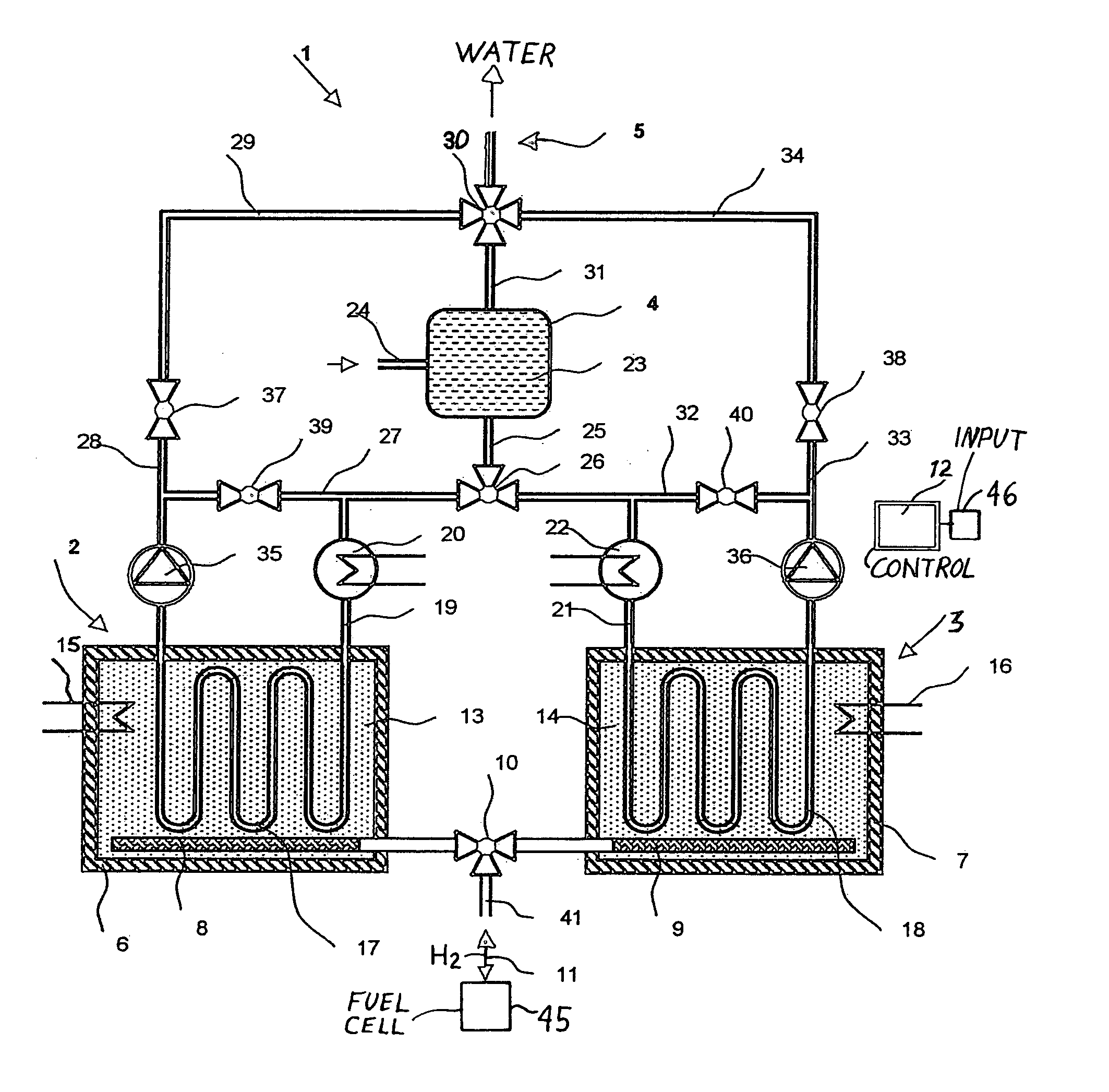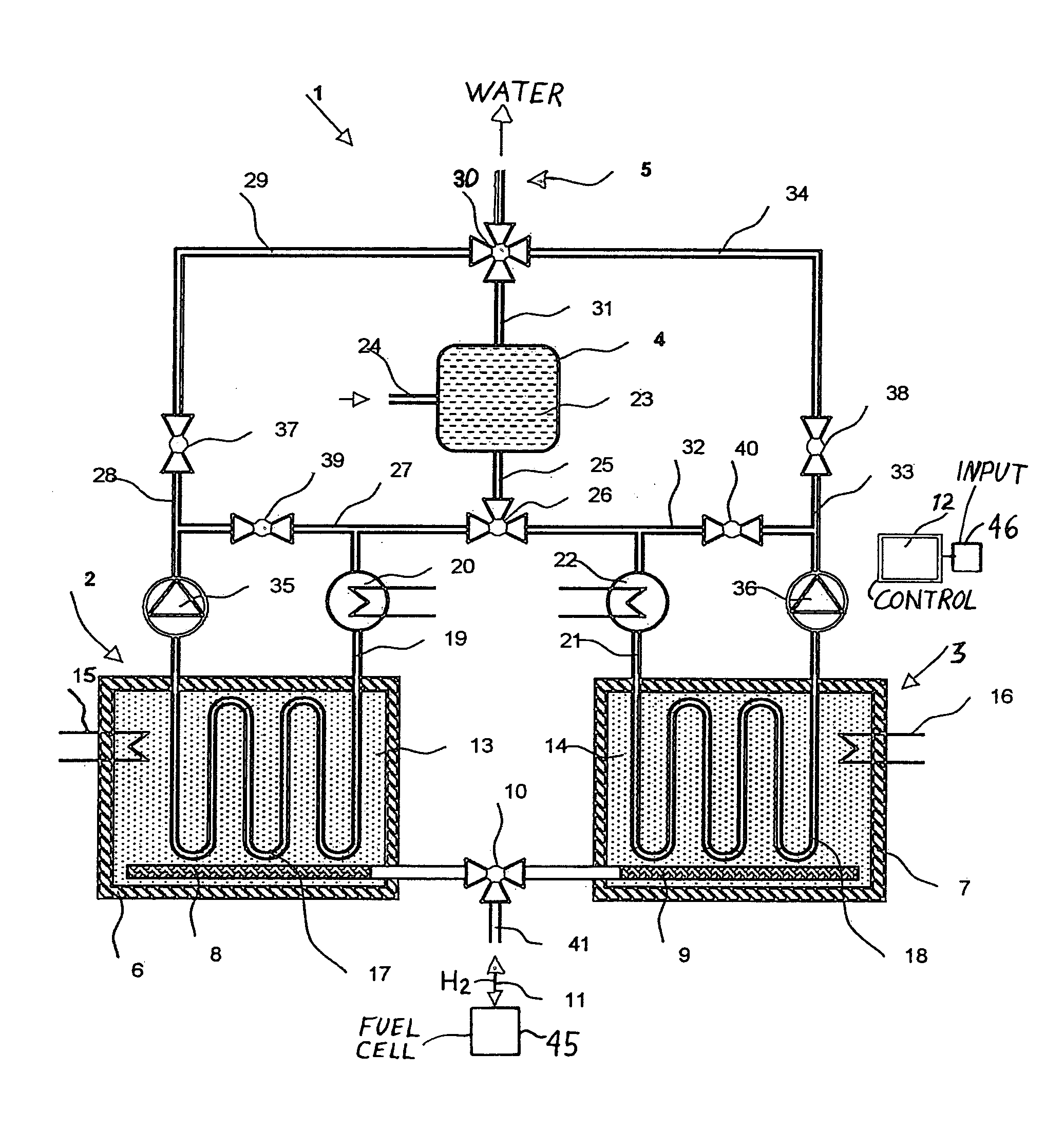Method and apparatus for tempering gaseous and/or liquid media in transportation vehicles, particularly in aircraft
- Summary
- Abstract
- Description
- Claims
- Application Information
AI Technical Summary
Benefits of technology
Problems solved by technology
Method used
Image
Examples
Embodiment Construction
[0032] The single FIGURE shows an example embodiment of an apparatus 1 according to the invention for the tempering of gaseous and / or liquid fluids in transportation vehicles, especially in aircraft.
[0033] The apparatus 1 consists, among other things, of a first thermochemical reservoir 2, a second thermochemical reservoir 3, a fluid reservoir 4, as well as a fluid outlet 5.
[0034] The first thermochemical reservoir 2 comprises, among other things, a first container 6, and the second thermochemical reservoir 3 includes a second container 7. The first and the second containers 6, 7 can be provided with an additional thermal insulation, in order to minimize heat losses. Furthermore the containers 6, 7 are embodied to be pressure-resistant and gas-tight.
[0035] A first hydrogen distributor 8 is arranged within the first container 6, and correspondingly a second hydrogen distributor 9 is arranged in the second container 7. The hydrogen distributors may comprise perforated or porous pip...
PUM
 Login to View More
Login to View More Abstract
Description
Claims
Application Information
 Login to View More
Login to View More - R&D
- Intellectual Property
- Life Sciences
- Materials
- Tech Scout
- Unparalleled Data Quality
- Higher Quality Content
- 60% Fewer Hallucinations
Browse by: Latest US Patents, China's latest patents, Technical Efficacy Thesaurus, Application Domain, Technology Topic, Popular Technical Reports.
© 2025 PatSnap. All rights reserved.Legal|Privacy policy|Modern Slavery Act Transparency Statement|Sitemap|About US| Contact US: help@patsnap.com


